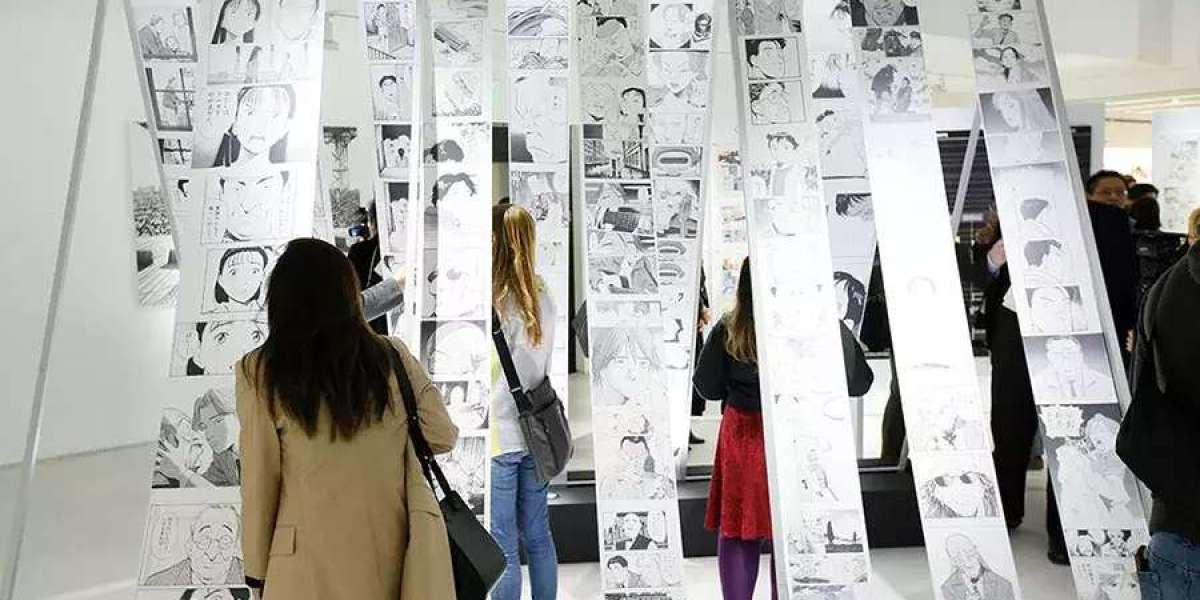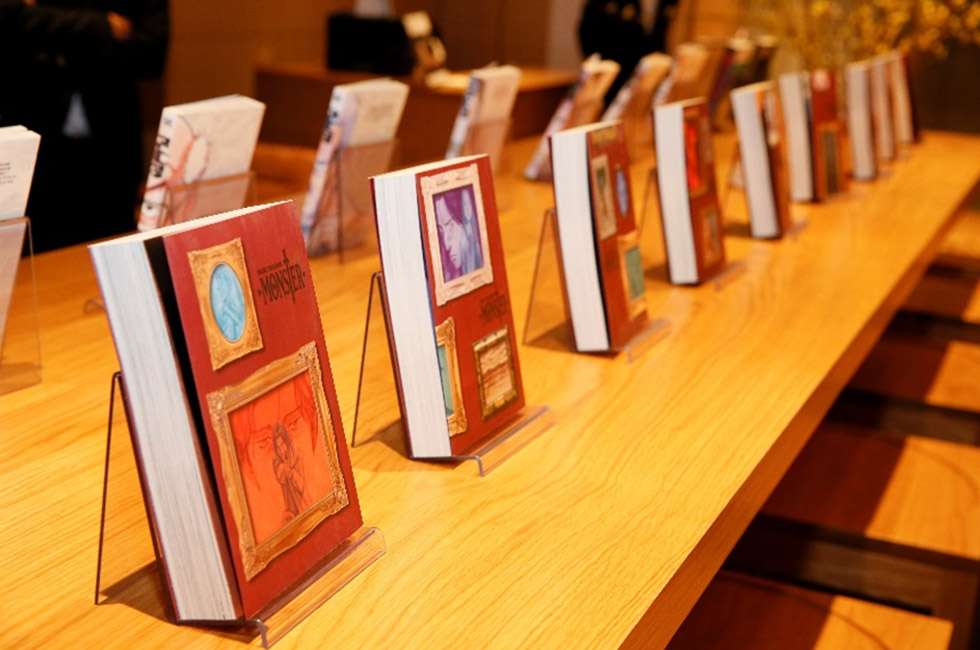Of all the unique art forms Japan has given to global pop culture, perhaps the most instantly recognizable is manga, and its “moving image” counterpart, anime. Characters like Astro Boy, Speed Racer, and Sailor Moon have become as ubiquitous as Mickey Mouse, adorning backpacks, toys, and lunchboxes worldwide. The pioneering cyberpunk visions of “Akira” and “Ghost in the Shell” shaped global science fiction, and past Academy Awards for anime director Hayao Miyazaki show that “cartoons” can be embraced as “high art”. JAPAN HOUSE Los Angeles hosted "This is Manga", the first North American exhibition of the influential manga artist Naoki Urasawa, which drew wide audiences and fans from students to major Hollywood directors. So how did manga evolve into an international phenomenon?
To clarify terms, “manga” is the umbrella term for comics, cartoons, and animation. It’s comprised of two kanji: (漫) “man” for “whimsical or impromptu” and (画) “ga” for “pictures”. But today and especially outside of Japan, “manga” is used specifically for printed comic books, while “anime” refers to animated motion pictures – be those film, TV, or web videos. Often, popular manga are adapted into anime or launched in parallel as a comprehensive franchise, so the terms are sometimes used interchangeably.
Many scholars trace manga’s roots back through Japanese art history, such as 12th century scroll painting (“emaki”), which told stories in a right-to-left sequential tableau, and 18th century “ukiyo-e” woodblock prints, which were mass-produced for the public and combined illustration and text for dynamic effect. The book “Shiji no Yukikai (Four Seasons)”, published in 1798, was the first to use the term manga, and by the late 1800s, there were several comic magazines in circulation. A major turning point came with the US Army’s occupation of Japan starting in 1945, which introduced American comics and cartoons. Japan’s post-War youth generation absorbed and adapted these influences, among them Osamu Tezuka, now known as the “godfather” of manga, who premiered his character “Astro Boy” in 1951. Often compared to Walt Disney, Tezuka helped to shape the industry through his prolific output and stylistic innovations that soon became standard, like wide-eyed characters and cinematic visual techniques. Early on, he directly adapted the Disney animated films “Bambi” (1951) and “Pinocchio” (1952) to manga form. Later, in manga and anime, he created everything from light-hearted children’s fare to treatments of more adult, ambitious themes, such as his 14-volume life of the Buddha (“Buddha”, serialized from 1972-1983).
Tezuka’s range reveals the diverse audiences that the manga publishing industry developed to serve. Most manga works are first published in serialized form in anthology magazines that are aimed at specific demographics. “Kodomomuke” refers to manga for young children, but as they age up, the audience splits, with “shonen” manga targeting boys under the age of 15 while “shojo” targets their female counterparts. In the older cohort, “seinen” are aimed at adult male readers and “josei” for adult women. Each of these categories contains a spectrum of storylines and genres, from action-adventure, to romance, to mystery and comedy. And it’s worth noting that though still a male-dominated field, some of the most popular manga of all time were created by female “manga-ka” (manga artists), like Naoko Takeuchi (Sailor Moon), and Hiromu Arakawa (Full Metal Alchemist).
Over the decades, the manga industry has been at once commercialized, concerned with reliable profits, and experimental, supporting wildly original visions. Since the late 1950s, the term “gekiga” has been used to describe darker, more complex or literary tales - similar to the Western distinction of “graphic novels” that are more niche than “comics”. Yoshihiro Tatsumi was an early luminary of this sub-genre, penning gritty, impressionistic stories of Tokyo’s underbelly and everyday alienation, and opening a pathway for other auteur visions.
Naoki Urasawa, born in Tokyo in 1960, is one of the most prolific and critically acclaimed manga artists working today. He has been called “the next Tezuka” for his impact on the industry and innovative storytelling over nearly 40 years. With one foot in the dark naturalism of “gekiga”, but another in sci-fi and fantasy, his sprawling works like “Monster” and “20th Century Boys” have been best-sellers at home and abroad. His series “Pluto”, a moody murder-mystery inspired by Tezuka’s “Astro Boy” (one of Urasawa’s earliest influences as an artist), was not only adapted for anime, but also as a theatrical stage production which has toured internationally. The exhibition at JAPAN HOUSE Los Angeles displayed more than 400 of Urasawa’s original drawings and storyboards - a rare view into the artist’s creative process. His diverse fans include the Academy Award-winning film director Guillermo del Toro, who has long described his dream project to adapt “Monster” to the screen, and who enthusiastically posted about the exhibition on social media.
Manga’s global fanbase has expanded since the 1990s, often introduced first by the imported subtitled anime versions of beloved series like Dragon Ball Z, Death Note, Sailor Moon, and of course, Pokemon. Original feature-length anime like the Studio Ghibli films also paved the way to mainstream popularity, and new companies like Tokyo Pop (founded in 1997) and CrunchyRoll (2006) sprung up to translate and distribute works for non-Japanese audiences. Today, the international spread of aspects of manga culture like toys, video games, cosplay, and its echoes across art, music, and fashion, show that manga might just be getting started.
When asked to define the medium that he helped create, Osamu Tezuka said: “Manga is virtual. Manga is sentiment. Manga is resistance. Manga is bizarre. Manga is pathos. Manga is destruction. Manga is arrogance. Manga is love. Manga is kitsch. Manga is sense of wonder. Manga is … there is no conclusion yet.”
To start learning about the wide, colorful world of manga and anime, stop by the JAPAN HOUSE Library to check out selected volumes from pioneering artists like Naoki Urasawa and Osamu Tezuka.
JAPAN HOUSE Library
| Mon. – Sat. | 10:00 AM – 8:00 PM |
| Sun. | 10:00 AM – 7:00 PM |
| Closed | Thanksgiving Day, Christmas Day Academy Awards weekend |
| Address | 6801 Hollywood Blvd. Level 5, Los Angeles, CA 90028 |








